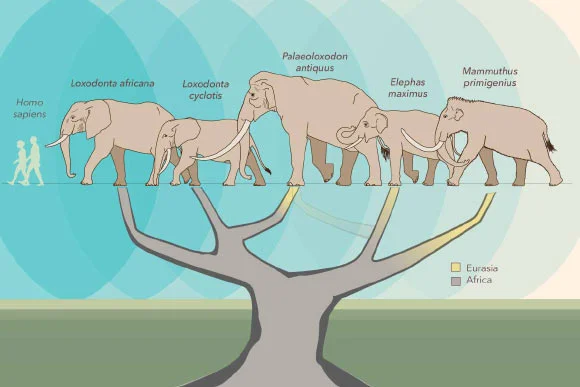Ancient DNA Changes Everything We Know About The Evolution of Elephants
/A study by Meyer et al reconfigures the elephant family tree, placing the straight-tusked elephant (Palaeoloxodon antiquus) closer to the African forest elephant (Loxodonta cyclotis), than to the Asian elephant (Elephas maximus), which was once thought to be its closest living relative. Image credit: Asier Larramendi Eskorza / Julie McMahon.
Ancient DNA Changes Everything We Know About The Evolution of Elephants
By Julien Benoit, Postdoc in Vertebrate Palaeontology, University of the Witwatersrand. First published on The Conversation Africa.
For a long time, zoologists assumed that there were only two species of elephant: one Asian and one African. Then genetic analyses suggested that the African Elephant could be divided into two distinct species, the African Forest and African Savannah elephants.
Now a new elephant has been added to the mix. The palaeoloxodon antiquus has been extinct for 120 000 years. This elephant roamed Europe and western Asia during the last ice age, about 400 000 years ago. A study of its DNA shows that this supposedly European animal is actually the African forest elephants’ closest relative. Another study by the same team found that at a genetic level, it may even have more in common with the modern African forest elephant than the African savannah elephant.
This study changes everything we thought we knew about the evolutionary history and ancestry of modern elephants and their closest relatives. It also shows that the African elephant’s lineage was not confined to Africa; the animals actually went out of the continent, which we didn’t know before. It roamed Europe and – through a lot of interbreeding – left its genetic mark far from its original stomping grounds.
The new find, based on DNA from fossils found in Germany, may also shed light on a DNA discrepancy that has puzzled scientists for some time.




